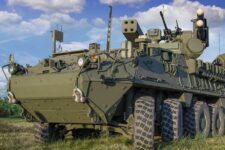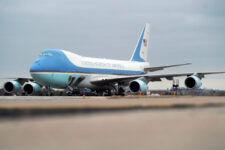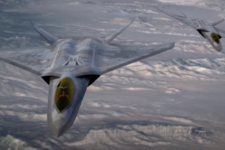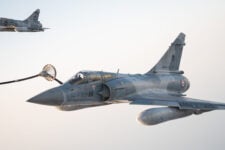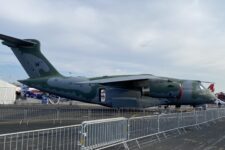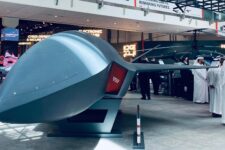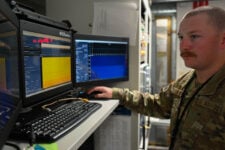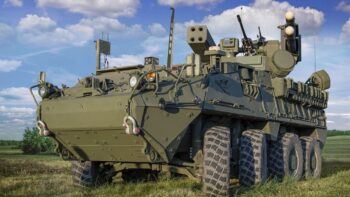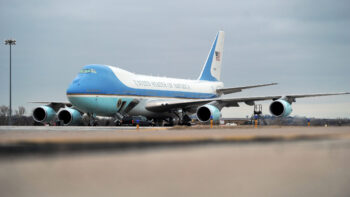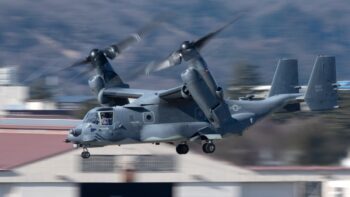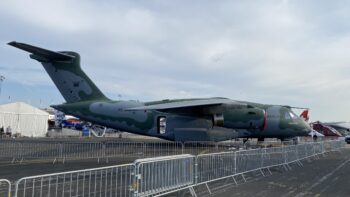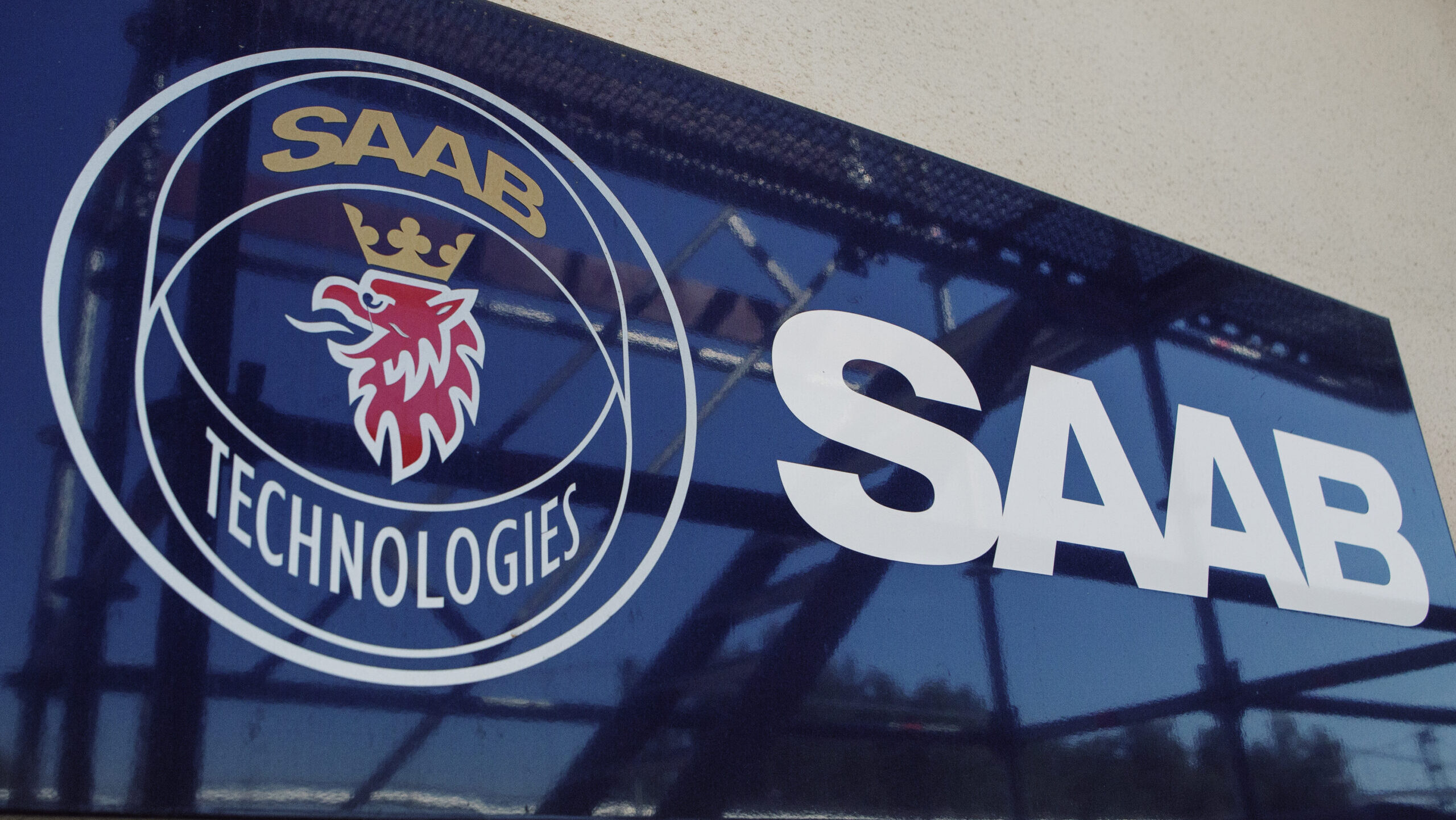
A logo of Saab AB at the Saab Dynamics AB facility in Karlskkoga, Sweden, on Monday, June, 12, 2023. (Erika Gerdemark/Bloomberg via Getty Images)
GOTHENBURG — Saab recently teased a number of Swedish future fighter demonstrator concepts for the first time, as it continues working through studies of manned and unmanned aircraft designs ahead of Sweden’s procurement decision of a next generation aircraft by 2031.
The demonstrator models were presented as a series of digital designs by the manufacturer during a Monday media visit to the company’s Linkoping production facility in southern Sweden, but other physical models have undergone wind tunnel testing, according to Peter Nilsson, head of advanced platforms at Saab.
The images shown to the media held scant details, just a small collection of only white aircraft silhouettes. Breaking Defense reached out to Saab for further information on the design ideas. After publication of this report, Saab provided a different concept image, below, showing what the company emphasized was just an “artist impression” of what a future aircraft could look like.
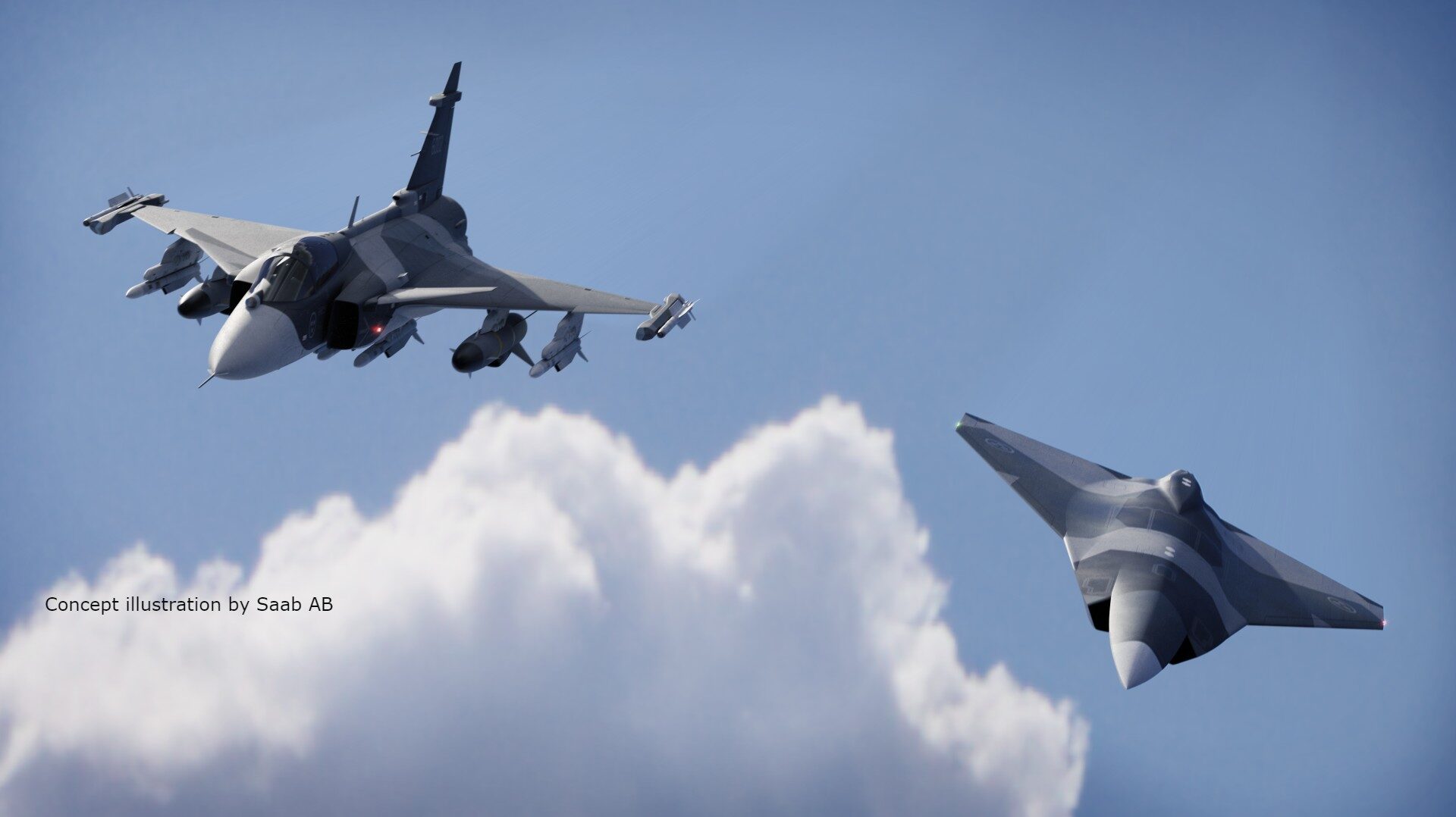
An “artist impression” of what Saab’s future fighter aircraft could be (right), provided on May 23, 2024. (Saab)
Nilsson told reporters that though Swedish authorities have yet to explain the exact capabilities they require of a demonstrator, some details have been discussed, including aircraft size and “different configurations.” Beyond that, “they want us to be fast and quick,” added Nilsson, with the way ahead set to involve rapid prototyping. (Breaking Defense accepted flight and hotel courtesies from Saab)
Additionally, an ultimate system review and a concept of innovation review are lined up in the near future to further determine the way forward for the demonstrator concept phase, according to Nilsson. Both future milestones follow on from a demonstrator stakeholder meeting this past spring.
So far, no decision has been taken around whether to settle on a manned or unmanned demonstrator.
“It could be unmanned, even if the aim is looking into manned, because what we are interested in [are] some technologies, that don’t need a pilot on board,” shared Nilsson.
“But as they [the Swedish Defence Materiel Administration] want to see iterations, [the design] doesn’t have to be super advanced,” but as the concept phase progresses, each design is expected to be more capable than the last.
In March, Saab received a two year contract from the Swedish Defence Material Administration to carry out “conceptual future fighter studies” primarily focusing on manned and unmanned aircraft designs, while Sweden’s stated future fighter phase 2 timeline runs from 2026 to 2031, which focuses on concept work and demonstrator development ahead of a final procurement decision.
Much of what is tested or developed in that five year window will be heavily influenced by Saab’s new Rainforest tech lab and a series of research and development projects.
Engineers at Rainforest are currently building a small, low-cost drone, dubbed Ruby, to assess flight of an aircraft made with novel technologies like 3D printed composite wings, a 3D printed hull, and integrated with 4G-6G datalink connectivity — avionics evolved from Saab’s Gripen E/F fighter jet.
Additionally, Saab showcases drone swarm concept art on the Rainforest website.
Elsewhere, the manufacturer also revealed that an additional 150 “advanced” programs are underway across its aeronautics division, covering a wide range of interests including weapons, sensors, electronic warfare, Command and Control (C2), human machine interfacing, AI and autonomy software, alongside cyber and information technology vehicle engineering.
Nilsson noted that advanced programs growth will lead to development of a further 120 projects launching after the “summer.”
Addressing potential problems around funding for the future fighter program out to 2030, he said, “I don’t need more money” but argued that for the cost it took to develop the Gripen E/F aircraft, competitors BAE Systems and Lockheed Martin would not have gotten “out of bed.”
Sweden was previously partnered with BAE on the UK’s Future Combat Air System (FCAS) program until opting to rethink future fighter plans. Unless Sweden ultimately decides to go it alone, Saab faces the prospect of reuniting with BAE to collaborate on the Global Combat Air Programme, which also includes Japan and Italy, or joining the French-German-Spanish Future Combat Air System/SCAF effort.
“We as a nation must decide [about a future fighter] before 2030,” Tommy Petersson, Deputy Commander of the Swedish Air Force told reporters today. “We initiated a four year study within the armed forces so we can have a solid opinion.”
Sweden currently has 60 Gripen E jets on order, the first of which are to be delivered to the Skaraborg Air Force Wing (F7) next year. The platform is expected to remain in service to at least 2060.
UPDATED 5/23/2024 at 5:00 am ET to include new concept art provided by Saab.
Meet Sergeant Stout: Army gives Stryker-Based M-SHORAD a proper name
As the service rolls out a name change for the new(ish) air defense weapon, it is also eyeing future upgrades that could integrate with robots and new interceptors.
